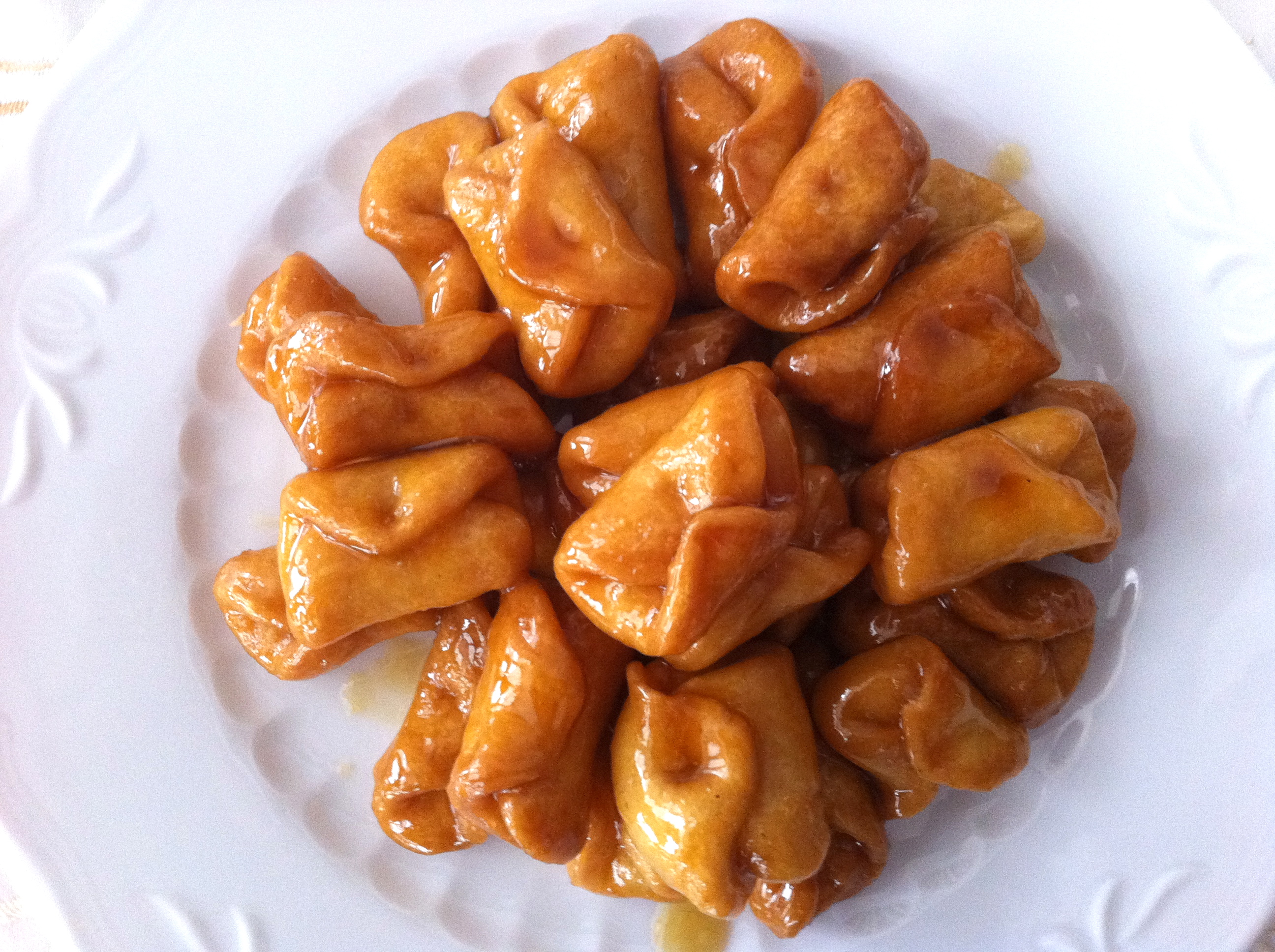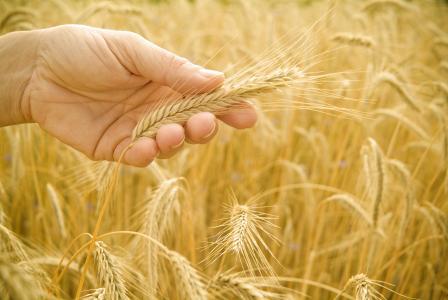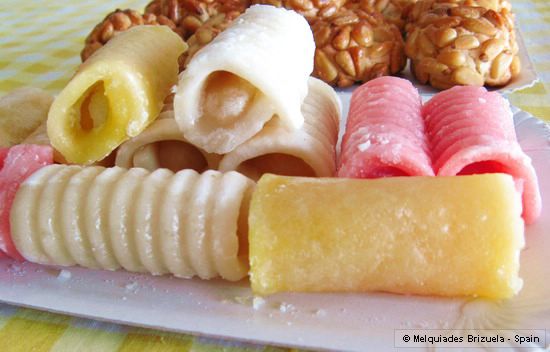Welcome to my blog. Here you can practise and improve your English in a different way. You will find interesting and useful links: culture and history, grammar, phonetic, FCE, vocabulary tasks, texts, videos, songs, English organization…
viernes, 30 de octubre de 2015
HALLOWEEN IS COMING...
October 31 is Halloween. On Halloween, children wear fancy dress costumes and they knock on doors and say “Trick or treat.” People open the doors and give the children lots of sweets.
Orange and black are the Halloween colours. Orange is the colour of pumpkins and black is the colour of darkness.
Halloween is a fun holiday!!! You can enjoy playing games about Halloween. Link on the picture and have fun!!!
Let's learn new vocabulary related to Halloween before singing:
ALL SAINTS' DAY IN SPAIN
 When is All Saints' Day in Spain?
When is All Saints' Day in Spain?All Saints' Day is celebrated in Spain on the same day as in the rest of the world - on November 1.
How do the Spanish Celebrate All Saints' Day?
The most obvious sign that it is All Saints' Day is that you'll notice the graveyards to be unusually full of flowers. The Spanish remember their dearly departed on All Saints' Day and bring flowers to the graves of their loved ones on this day.
If you can get to see a performance of Don Juan Tenorio on All Saints' Day, seize the opportunity. The play is the most famous (and the most romantic) story about the mythical Don Juan and is performed each year on All Saints' Day.
There are a few traditional sweets that the Spanish eat on All Saints' Day. The most common is Huesos de Santo (literally 'saint's bones'), which is made of marzipan and 'dulce de yema'. Another is 'buñuelos de viento'.
TRADITIONAL FOOD FOR ALL SAINTS' DAY IN SPAIN
Saints’ bones. (Huesos de santo)
If there’s one typical sweet for All Saints’ Day, it’s the “saints’ bones”. Made with a marzipan dough, these sweets are covered with a syrup and have different fillings. They are shaped like bones, which is where its name comes from. The saints’ bones make up part of the pastry and baked goods in Spain in general, and it’s very common to eat them across the peninsula on November 1st.
Wind Fritters (Buñuelos o buñuelos de viento)

Though they are perhaps more well-known toe at during “Holy Week”, these fritters are also eaten for All Saints’ Day. They’re very simple to make, and the recipe basically consists in a dough made with flour, sugar and a filling that could be one of many flavors. The fritters are cheaper and lighter than the Saints’ bones.
Quince Jelly (Dulce de membrillo)
This is a very fall treat because it’s during this time when the fruit is harvested from the Quince tree and a type of jelly or compote is made in the home. Careful, though: quince can’t be eaten raw. The jelly is made simply by boiling the pulp of the quince with the same amount of sugar, resulting in a block of jelly that can be cut to go with or fill different types of culinary dishes.
“Pestiños” (There is no English translation!)
It’s tradition to eat them at this time of year. They’re pretty easy to make, since there are only three main ingredients: flour, olive oil and sugar, but the key is in frying the dough, and that’s another story. There are lots of variations of the recipe, sometimes adding lemon, honey or Jerez wine.

Roasted chestnuts (Castañas asadas)
Since All Saints’ Day is celebrated in fall, it isn’t strange that one of the most typical nuts is eaten to celebrate it: chestnuts. When they’re roasted they are very tasty, and can be easily eaten. The most common way to roast them is over a hot griddle, though they can also be roasted in the fireplace, in a bonfire or even in the oven.
ALL SAINTS' DAY IN SPAIN
 All Saints Day in Spain (Todos Los Santos) takes place on November 1st. It is a very important national public holiday when people from all over the country return to their town or village to lay flowers on the graves of deceased relatives. There are few religious days that mean quite so much to the ordinary people of Spain as this solemn festival.
All Saints Day in Spain (Todos Los Santos) takes place on November 1st. It is a very important national public holiday when people from all over the country return to their town or village to lay flowers on the graves of deceased relatives. There are few religious days that mean quite so much to the ordinary people of Spain as this solemn festival.
 All Saints Day in Spain (Todos Los Santos) takes place on November 1st. It is a very important national public holiday when people from all over the country return to their town or village to lay flowers on the graves of deceased relatives. There are few religious days that mean quite so much to the ordinary people of Spain as this solemn festival.
All Saints Day in Spain (Todos Los Santos) takes place on November 1st. It is a very important national public holiday when people from all over the country return to their town or village to lay flowers on the graves of deceased relatives. There are few religious days that mean quite so much to the ordinary people of Spain as this solemn festival.
On November 1st each year, the Feast of All of the Saints is held and this particular public holiday centres around remembering dead family members. Most people will visit the graves of relatives and decorate them with elaborate floral displays. Roads around cemeteries will be crammed with traffic, flower sellers line the streets and, in many places, additional public transport services are organised. Although this might sound over-commercialised and hectic it is actually, for most people, a day of high emotions. The Eucharist, or Mass, will often be performed in the cemetery several times during the day.
 In common with many festivals throughout the country there are a number of special dishes which are associated with All Saints’ Day. Chief amongst these is the tradition of eating roasted chestnuts, castañas, alongside small almond cakes, pannellets. The chestnut element of the tradition comes from the legend of Maria La Castañada, a chestnut seller, about whom there are many stories. The almond cakes apparently are reminders of the days when home made cakes and offerings were left with the bodies of the dead. At this time of the year you will also see in the shops huesos de santo – the saint’s bones – which have marzipan, eggs and sugar syrup and buñuelos de viento – puffs of wind – which are doughnuts liberally sprinkled with cinnamon and sugar. In Catalonia in particular it is also quite usual to eat sweet potatoes, el boniato.
In common with many festivals throughout the country there are a number of special dishes which are associated with All Saints’ Day. Chief amongst these is the tradition of eating roasted chestnuts, castañas, alongside small almond cakes, pannellets. The chestnut element of the tradition comes from the legend of Maria La Castañada, a chestnut seller, about whom there are many stories. The almond cakes apparently are reminders of the days when home made cakes and offerings were left with the bodies of the dead. At this time of the year you will also see in the shops huesos de santo – the saint’s bones – which have marzipan, eggs and sugar syrup and buñuelos de viento – puffs of wind – which are doughnuts liberally sprinkled with cinnamon and sugar. In Catalonia in particular it is also quite usual to eat sweet potatoes, el boniato. Back in the 10th century All Saints’ Day was celebrated on May 13th but Popes Gregory III and IV moved it to its present date because they wanted to neutralise the pagan festival, the forerunner of Halloween, that was held at that time of the year. The ancient Gaels believed that this time of the year, sometimes thought of as the Celtic New Year, was when the boundaries between the living and the dead disappeared so the Church linked this with All Saints’ Day. Initially, the time was a period of fasting as well as the holding of vigils. What began as a time of remembrance of the Christian martyrs evolved into the present custom of remembering all the dead.
Back in the 10th century All Saints’ Day was celebrated on May 13th but Popes Gregory III and IV moved it to its present date because they wanted to neutralise the pagan festival, the forerunner of Halloween, that was held at that time of the year. The ancient Gaels believed that this time of the year, sometimes thought of as the Celtic New Year, was when the boundaries between the living and the dead disappeared so the Church linked this with All Saints’ Day. Initially, the time was a period of fasting as well as the holding of vigils. What began as a time of remembrance of the Christian martyrs evolved into the present custom of remembering all the dead.
One of the All Saints’ traditions across Spain is the performing of the play Don Juan Tenorio, written by José Zorrilla. The final act of this portrayal of Don Juan’s choice between salvation or hell is set in a cemetery with the legendary lover lamenting over his betrayal of his dead lover.
ALL SAINTS' DAY - RECIPES FROM SPAIN

Buñuelos de Viento (Wind Puffs)No one knows exactly when these sweetened dough fritters, which are usually filled with cream, chocolate, pudding and anything else, began to be elaborated. But given that the Royal chef of Spanish king Felipe II made some references to this pastry in some of his recipes towards the beginning of the XVII century, has raised them to be one of the traditional culinary desserts to celebrate Dia de Todos los Santos, as tradition states that when you eat a buñuelo, a soul is released from purgatory.
Huesos de Santo (Saints' Bones)These oddly named sweets, which are made of marzipan dough rolled into thick thumb-size tubes, do not actually resemble a bone in shape, so do not fret over its unappealing name. Its name derives from the final coloring it acquires after its baked in a syrup covering: a bone-like beige hue. Huesos de Santo were also traditionally filled with a sweet egg yolk concoction, but nowadays are elaborated with all types of filling (from chocolate to coconut shavings to marmalade, banana, etc) to being sold in an assortment of colors that hint away at its flavor.
martes, 27 de octubre de 2015
SINGULAR AND PLURAL NOUNS
In general the plural of a noun is formed by adding -S to the noun.
| Singular | Plural |
|---|---|
| car | cars |
| house | houses |
| book | books |
| bird | birds |
| pencil | pencils |
However:
1. When the noun ends in SS, SH, CH or X, we add -ES to the noun.
| Singular | Plural |
|---|---|
| kiss | kisses |
| wish | wishes |
| match | matches |
| box | boxes |
| fox | foxes |
- I have a box in my bedroom.
- I have three boxes in my bedroom.
2. When the noun ends in a VOWEL + Y, we add -S to the noun.
| Singular | Plural |
|---|---|
| boy | boys |
| holiday | holidays |
| key | keys |
| guy | guys |
3. When the noun ends in a CONSONANT + Y, we remove Y and add -IES to the noun.
| Singular | Plural |
|---|---|
| party | parties |
| lady | ladies |
| story | stories |
| nanny | nannies |
| city | cities |
4. If the noun ends in F or FE, we remove the F/FE and add -VES to the noun.
| Singular | Plural |
|---|---|
| life | lives |
| leaf | leaves |
| thief | thieves |
| wife | wives |
5. If the noun ends in IS, we change it to ES.
| Singular | Plural |
|---|---|
| analysis | analyses |
| basis | bases |
| crisis | crises |
6. There are a number of nouns that don't follow these rules. They are irregular and you need to learn them individually because they don't normally have an S on the end.
| Singular | Plural |
|---|---|
| man | men |
| woman | women |
| child | children |
| foot | feet |
| tooth | teeth |
| goose | geese |
| mouse | mice |
- There is a child in the park.
- There are many children in the park.
7. There are some nouns in English that are the same in the singular and the plural.
| Singular | Plural |
|---|---|
| fish | fish |
| sheep | sheep |
| deer | deer |
| moose | moose |
| aircraft | aircraft |
- I can see a sheep in the field.
- I can see ten sheep in the field.
Sometimes you will hear the word fishes (especially in songs) though it is grammatically incorrect.
EXERCISES TO PRACTISE:
miércoles, 14 de octubre de 2015
martes, 13 de octubre de 2015
PRESENT SIMPLE_GRAMMAR AND EXERCISES
We use the present simple to talk about repeated actions or events, permanent states or things which are always true. -

PRESENT SIMPLE: AFFIRMATIVE, NEGATIVE AND QUESTIONS
And now, relax playing games related to present simple. Click on the links.

PRESENT SIMPLE: GRAMMAR AND EXERCISES
Listen to Mónica and pay attention before doing the exercises:
Let's start with the following interactive book. Open in the page of daily routine:
Listen to the song "Hello, Goodbye" by the Beatles and then do the exercise:
Warm up:
1) What do you prefer to say: Hello or Goodbye?
2) How do you feel when you say "hello"? (happy, sad, excited, bored...?)
3) How do you feel when you say "goodbye"? (happy, sad, excited, bored, upset...?)
Put these lines in the right order according to the song:
( ) You say GOODBYE and I say HELLO, HELLO, HELLO
( ) You say YES, I say NO.
( ) I don't know why you say GOODBYE I say HELLO.
( ) I say HIGH, you say LOW
( ) Oh, NO!
( ) You say STOP, I say GO, GO, GO.
( ) You say WHY and I say I DON'T KNOW.
Write the lyrics down and sing along.
Follow up:
1) How many people are there involved in the song?
2) What is their problem?
Now you can practice in the following links:
Exercise 1
Exercise 2
Exercise 3
Exercise 4
Let's start with the following interactive book. Open in the page of daily routine:
Listen to the song "Hello, Goodbye" by the Beatles and then do the exercise:
Warm up:
1) What do you prefer to say: Hello or Goodbye?
2) How do you feel when you say "hello"? (happy, sad, excited, bored...?)
3) How do you feel when you say "goodbye"? (happy, sad, excited, bored, upset...?)
Put these lines in the right order according to the song:
( ) You say GOODBYE and I say HELLO, HELLO, HELLO
( ) You say YES, I say NO.
( ) I don't know why you say GOODBYE I say HELLO.
( ) I say HIGH, you say LOW
( ) Oh, NO!
( ) You say STOP, I say GO, GO, GO.
( ) You say WHY and I say I DON'T KNOW.
Write the lyrics down and sing along.
Follow up:
1) How many people are there involved in the song?
2) What is their problem?
Now you can practice in the following links:
Exercise 1
Exercise 2
Exercise 3
Exercise 4
DAILY ROUTINES_PRESENT SIMPLE
You can practise the Present Simple with daily routines:
Let's start
Exercise 1
Exercise 2
Exercise 3
Exercise 4
Vocabulary daily routine

Let's start
Exercise 1
Exercise 2
Exercise 3
Exercise 4
Vocabulary daily routine

Watch the videos about daily activities
And now sing with us!
SIMPLE PRESENT TENSE
We use the present simple to talk about repeated actions or events, permanent states or things which are always true.
Simple Present (Aff., Neg., Interr.):
Revision: Be, Have, Do/does?
Simple Present Tense:
lunes, 12 de octubre de 2015
HISPANIC DAY OR NATIONAL DAY - 12th OCTOBER
Hispanic Day (Día de la Hispanidad) or National Day (Fiesta Nacional de España) is an annual national public holiday in Spain on October 12. It marks the anniversary of when Christopher Columbus first set foot in the Americas in 1492.

The king of Spain supervises the raising of the Spanish national flag in the center of Madrid on Hispanic Day. He and the prime minister lead a military parade after that. The parade includes representatives from most of Spain's military units and various military vehicles. Armed forces' planes perform aerobatics above the parade route and display yellow and red smoke to represent the Spanish flag. Radio, television and Internet news services broadcast live on these events.
Hispanic Day is a day off work and an opportunity to spend time quietly at home or in the company of family members and close friends. People in the Aragon region in the north-east of Spain also commemorate Our Lady of the Pillar, their patron saint, on October 12.
Suscribirse a:
Entradas (Atom)







